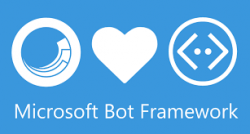Microsoft chatbots
Microsoft Corporation is heavily invested in chatbots and chat-based interfaces, as CEO Satya Nadella believes they will soon become the primary way that people use the internet.[1] Microsoft has developed chatbots such as Cortana[2] and even a program to create your own chatbot called Bot Framework[3]. However, this page will be focused on Microsoft's efforts to create a collection of chatbots with emotional intelligence across the globe.
Contents
Background and history
The first chatbot with emotional intelligence capabilities that Microsoft developed is called Xiaoice. Xiaoice was launched in China in 2014. After much success, Microsoft developed Rinna in Japan in 2015. Next, Tay was released in 2016 in the United States, though the release did not last long as Tay quickly started tweeting politically incorrect phrases and was shut down. This was a huge learning experience for Microsoft and caused a complete revamping of their chatbot technologies. As a result, Zo was created in the United States later in 2016 as Tay's successor. From there, Ruuh was released in 2017 in India as well as Rinna in Indonesia.
Xiaoice (China, 2014)
Xiaoice is without a doubt Microsoft's most successful chatbot with emotional intelligence. Xiaoice was released in China in May 2014 and now has well over 660 million online users worldwide. Xiaoice has a wide variety of incredible features from writing poems to writing songs to painting. Microsoft has continued to release new versions of Xiaoice over the years with more and more features, with their most recent version being the 7th generation of Xiaoice, which was released in August of 2019.
Rinna (Japan, 2015)
Rinna was released in Japan in 2015 and has over 7 million users. In 2018, Rinna came out with a new project called "Rinna Goes Local!" which was created by Microsoft developers in partnership with five local Japanese governments. This project was started to increase her appeal and user-base across Japan to areas outside of major urban areas. This project includes features for users to learn about each of these local regions by taking quizzes, participating in a multiple-choice story, or looking through a map of less well-known visitor spots.
Tay (US, 2016)
Zo (US, 2016)
Ruuh (India, 2017)
Rinna (Indonesia, 2017)
Ethical implications/dilemmas
References
- ↑ Walker, John. “Chatbot Comparison – Facebook, Microsoft, Amazon, and Google.” Emerj, 13 Dec. 2019. https://emerj.com/ai-sector-overviews/chatbot-comparison-facebook-microsoft-amazon-google/
- ↑ “Cortana – Your personal productivity assistant.” Microsoft. https://www.microsoft.com/en-us/cortana
- ↑ “Microsoft Bot Framework.” Microsoft. https://dev.botframework.com/
